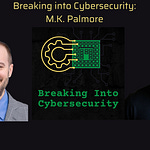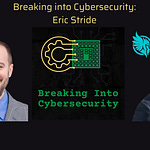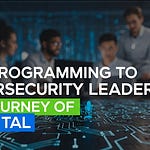Join us live on Fridays at 11 am EST and ask your questions live. If you like a topic covered, send it over to us.
The concept of "Trust but verify" within the realm of "Zero Trust" security frameworks is quite intriguing, as it merges a traditional approach to security with a more contemporary, stringent model.
Originally, "Trust but verify" was a security principle that emphasized the need for continuous validation. In practice, this means that while organizations might initially trust users or systems, they must consistently verify their credentials and permissions to maintain security. This approach recognizes that trust is essential but must be accompanied by ongoing scrutiny to be effective.
On the other hand, "Zero Trust" is a security model based on the philosophy of "never trust, always verify." This model assumes that threats could be internal or external, requiring strict identity verification, strict access controls, and network segmentation to minimize risks. Zero Trust does not inherently trust any entity inside or outside its perimeters at the outset; instead, it demands continuous validation of every request as if it originates from an untrusted source.
When we discuss blending "Trust but verify" with "Zero Trust," we look at a nuanced approach that applies rigorous and continuous verification processes in every interaction within an IT environment, regardless of the origin's assumed trustworthiness. This integration helps businesses protect sensitive data and systems by enforcing strict access controls while ensuring that every action is subject to security checks, reducing potential breaches and enhancing overall security posture.
For businesses, adopting a "Trust but verify" stance within a zero-trust framework means securing their networks and data more effectively and fostering a culture of security that aligns with dynamic business environments and evolving threat landscapes. This approach ensures that security measures are robust, scalable, and capable of supporting immediate operational needs and long-term strategic goals.
When practitioners focus on the "Trust but Verify" pillar within a Zero Trust framework, they should be vigilant about several key aspects that ensure this principle is effectively implemented to safeguard their organization's IT environment. Here are some essential points of concern:
Continuous Verification: Continuous verification is at the heart of the "Trust but Verify" approach. Practitioners need to ensure that verification processes are not just a one-time event but ongoing. This includes re-authenticating users and re-validating their access rights on a regular basis or dynamically based on context, such as changes in user behavior or risk level.
Multi-Factor Authentication (MFA): Implementing MFA is crucial. This security measure adds an extra layer of protection by requiring two or more credentials to verify a user’s identity. Practitioners should ensure these authentication factors are robust and diverse (something you know, something you have, and something you are).
Least Privilege Access Control: Access rights should be tightly controlled and restricted based on the principle of least privilege. This means users are granted only the access necessary to perform their job functions. Practitioners must regularly review and adjust these permissions to adapt to changes in roles and responsibilities.
Audit and Log Review: Regular audits and log reviews are critical for detecting and responding to anomalies and potential security threats. Practitioners should implement automated tools to help monitor and analyze activity logs for unusual actions that could indicate a breach or security risk.
Endpoint Security: With numerous devices accessing the network, securing these endpoints is vital. Practitioners should ensure that all devices are regularly updated, monitored for compliance with security policies, and scanned for vulnerabilities.
Encryption and Data Security: Data should be encrypted at rest and in transit to protect it from unauthorized access. Practitioners must enforce strong encryption standards and regularly update cryptographic keys and protocols to guard against emerging threats.
Segmentation of Network: Network segmentation divides the network into smaller, manageable segments, which can limit the spread of breaches within systems. Practitioners should ensure that these segments are properly secured and that their interactions are monitored to prevent attackers' lateral movement.
User Education and Awareness: Human error often leads to security breaches. Practitioners should invest in regular training programs to keep users aware of security best practices and the latest phishing tactics, thereby reducing the risk of security lapses.
Adaptive Security Policies: Security policies should be adaptable based on context and risk. This includes adjusting access controls based on the user's location, device security posture, and network threats.
By concentrating on these points, practitioners can effectively implement the "Trust but Verify" pillar within a zero-trust framework, enhancing their organization's security posture while accommodating the flexibility needed for business operations. This approach strengthens defenses and supports a proactive, resilient security culture.
We talked about the course I developed at the end to help students understand the foundations of LLM and prompt engineering. Here is the course for those interested.
Join us to unlock the full potential of LLM technology and stay ahead in the competitive landscape.












